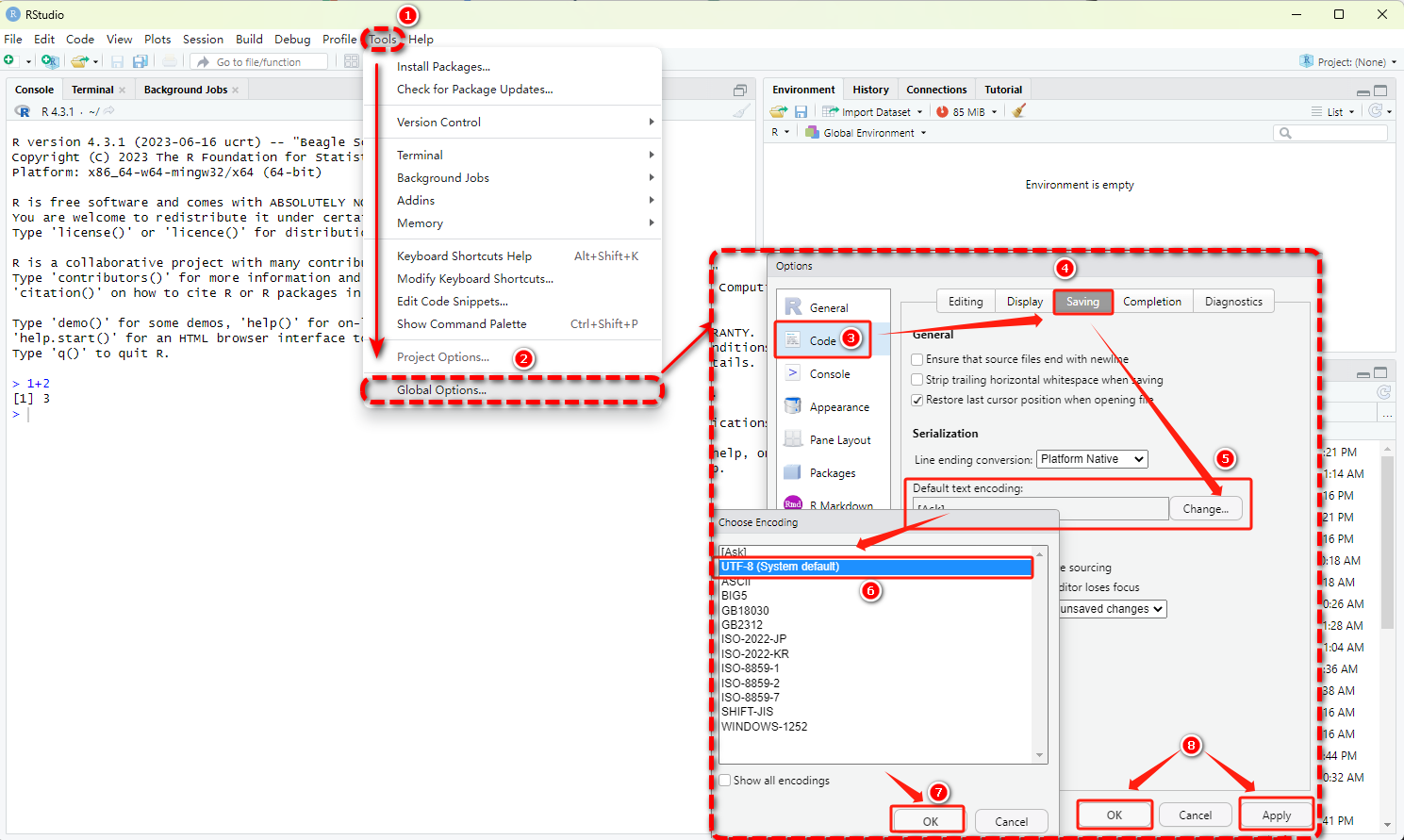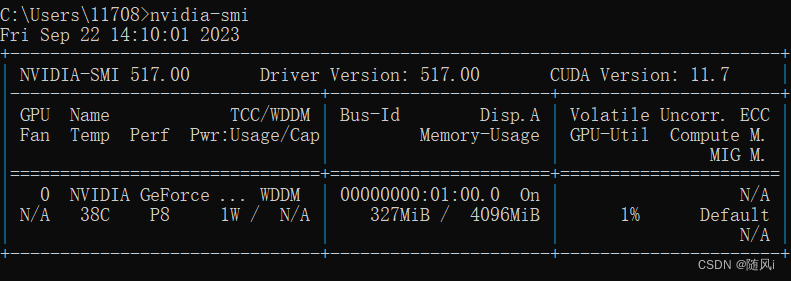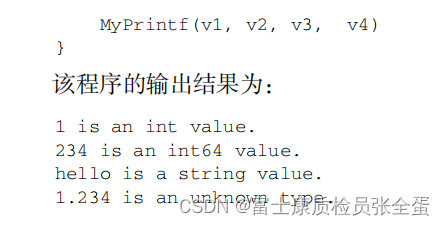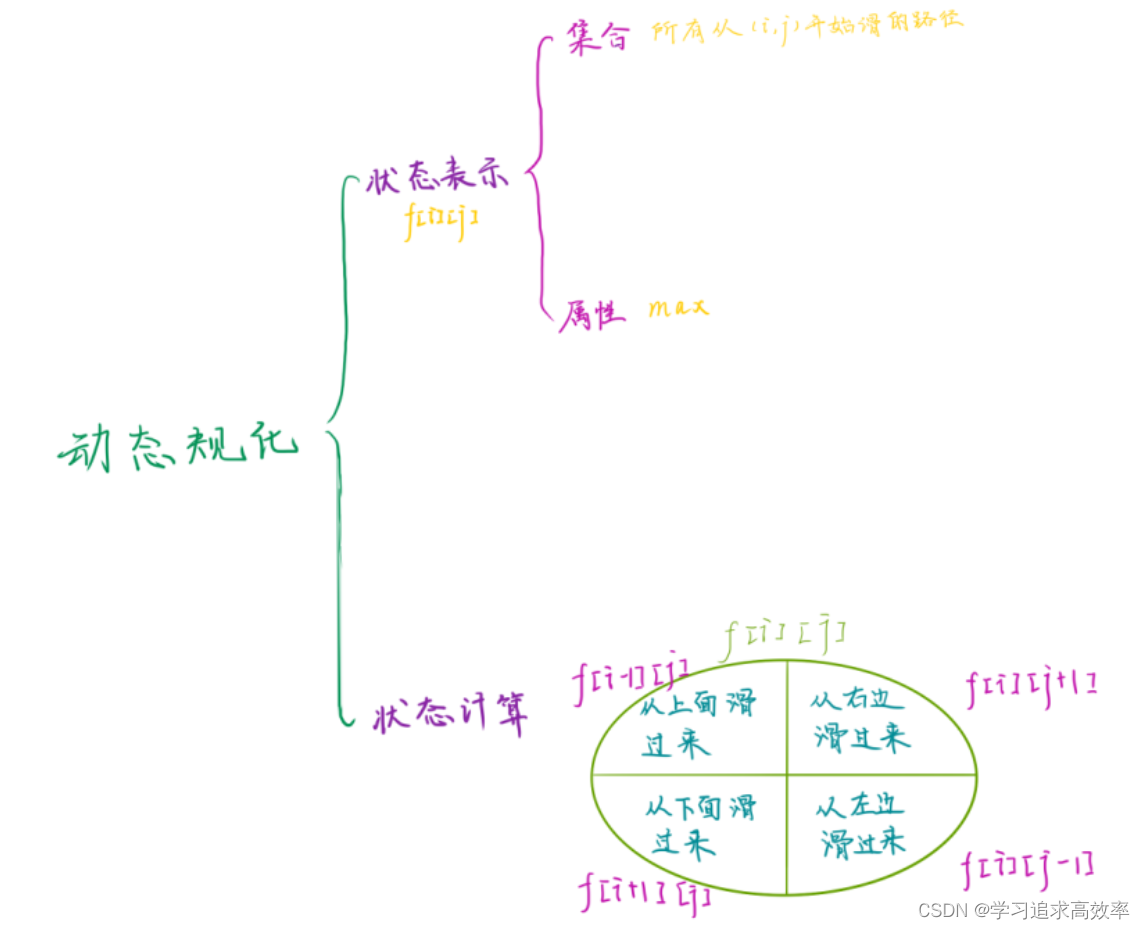目录
Part 1: What is Consensus?
Definition
Distributed Consensus
Consensus in Bitcoin
CAP Theorem
Definitions
Trade-offs ("Pick Two" Dilemma)
Part 2: Why Bitcoin needs Consensus
Types of Consensus Mechanisms
Why Bitcoin Needs Consensus
Byzantine Generals Problem
Sybil Attack
Bitcoin's Consensus Mechanism: Proof of Work (PoW)
What is Proof of Work?
PoW Mining Principle
Longest Chain Rule & 51% Attack
Summary of PoW Features
Review
Transaction model
UTXO Model
对于第一个问题:
对于第二个问题:
Part 1: What is Consensus?
Definition
- Consensus: A process of agreement between distrusted nodes on the final state of specified data.
Distributed Consensus
- Objective: To attain a common state/value among multiple nodes despite the presence of some failing nodes.
Consensus in Bitcoin
- Bitcoin aims to reach an agreement on the state of its blockchain, which includes transaction history, account balances, etc.
CAP Theorem
Definitions
- Consistency: All changes are seen by all nodes at the same time.
- Availability: Systems return a response within an acceptable time frame.
- Partition Tolerance: The system continues to function when network segments fail to communicate. Systems can be partitioned into sub-networks that continue to function independently.
Trade-offs ("Pick Two" Dilemma)
- Availability ≠ Correctness: You can only achieve two out of the three CAP properties in a distributed system.
-
CA/P: Focuses on consistency and availability but lacks partition tolerance.
- Implementation: All data is stored on a single node, and other nodes read from this main node.
- Note: Not considered a distributed system.
-
CP/A: Focuses on consistency and partition tolerance at the cost of availability.
- Implementation: Each node stores data, with the primary focus on ensuring consistency.
-
AP/C: Focuses on availability and partition tolerance at the cost of consistency.
- Implementation: Each node stores data, with the primary focus on ensuring availability.
Note: Since distributed systems must have Partition Tolerance (P), they must choose between Consistency (C) and Availability (A).
Part 2: Why Bitcoin needs Consensus
Types of Consensus Mechanisms
-
BFT-based (Byzantine Fault Tolerance)
- Feature: Low computational requirements
- Participants: Permissioned, limited trust
- Applicability: Alliance/Private Chains
-
Leader Election-based
- Example: Proof of Work (PoW)
- Feature: Computationally intense
- Participants: Permissionless, anonymous, no trust
- Applicability: Public Chains
Why Bitcoin Needs Consensus
Byzantine Generals Problem
- Problem: Uncertain transmission of information due to possible traitors
- Goal: To maintain consistency in a distributed system
- Solution:
- Simplified to a Generals and Lieutenants model
- Loyal Lieutenants follow the same command, traitors may disrupt
- Fault Tolerance: Malicious nodes must be less than 1/3 of the total nodes
Sybil Attack
- Consequence: Makes Byzantine Fault Tolerance unsuitable for Bitcoin
- Method: Creating multiple identities to cast multiple votes
- Why Feasible:
- Bitcoin is a decentralized, anonymous service
- Low cost to create multiple identities
- Example: Double-spending attack
- Defense: Resource-based voting through Proof of Work (PoW)
Bitcoin's Consensus Mechanism: Proof of Work (PoW)
What is Proof of Work?
- Goal: To solve the Byzantine Generals Problem
- Voting Eligibility: Granted through computational work
PoW Mining Principle
- Mining Process: Combines previous block's hash, Merkle root of new transactions, a nonce, and a timestamp.
- Success Criterion:
SHA(Merkle Root + Previous Block Hash + Timestamp + Nonce) < target- Number of leading zeros indicates difficulty level
Longest Chain Rule & 51% Attack
- 51% Attack: Control over more than half of the computational power can result in a fake chain being accepted.
- Prevention: Wait for 6 block confirmations before proceeding with transactions.
Summary of PoW Features
- Challenging: Difficult to solve but easy to verify
- Fairness: No shortcuts
- Randomness: Ensures a decentralized and unpredictable process
- Stability: Enables the stable operation of the blockchain with multiple-party participation
Review
Transaction model
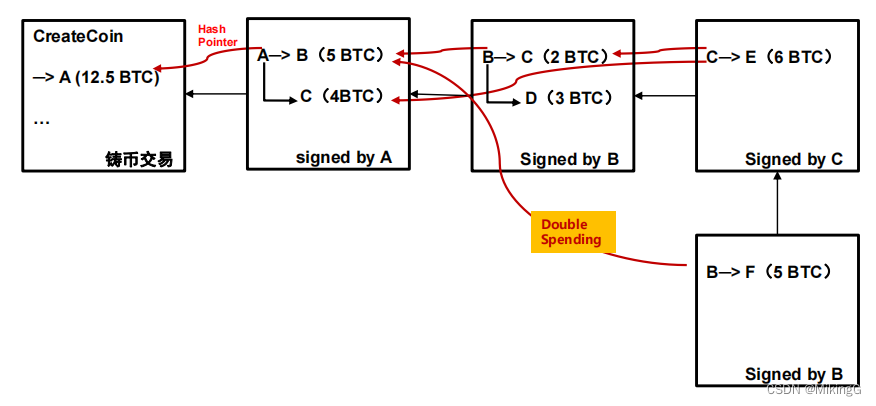
每一个交易都省略了剩下自己的那一部分,比如第二个区块中应该还有A给自己剩下的3.5BTC。
每一个转出方的Hash Pointer都指向之前所有的收入来源,这样做可以避免双花攻击。
每一个转出方都要对这笔交易进行签名。
UTXO Model
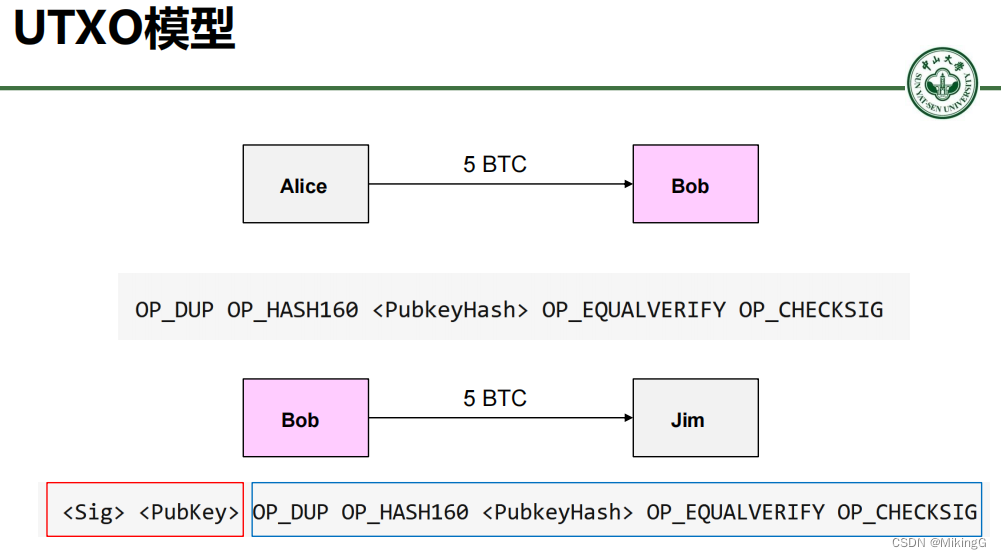
- Alice 转给bob ,第一个PubkeyHash是谁的?
- 第二个<sig><PubKey>,PubkeyHash是谁的?
- <sig>中的内容是什么?
在比特币中,一个比较常见的脚本模式用于标准的“支付到公钥哈希”(Pay-to-PubkeyHash,或P2PKH)交易是如下的:
-
锁定脚本(ScriptPubKey):
OP_DUP OP_HASH160 <PubkeyHash> OP_EQUALVERIFY OP_CHECKSIG -
解锁脚本(ScriptSig):
<Sig> <PubKey>
这里的 <PubkeyHash> 和 <Sig>、<PubKey> 是不同脚本中的占位符,它们在实际的交易中会被实际的数据替换。
对于第一个问题:
在 OP_DUP OP_HASH160 <PubkeyHash> OP_EQUALVERIFY OP_CHECKSIG 中的 <PubkeyHash> 是Bob的公钥哈希。Alice想要将比特币发送给Bob,所以这个脚本锁住了属于Bob的输出。
对于第二个问题:
在解锁脚本 <Sig> <PubKey> 中:
<Sig>是Bob用他的私钥对此交易进行签名的结果。<PubKey>是Bob的公钥。<PubkeyHash>仍然是Bob的公钥哈希。
这样,当这两个脚本合并和执行时,它们会首先用 <PubKey> 计算一个公钥哈希,然后检查这个计算出来的公钥哈希是否与锁定脚本中的 <PubkeyHash> 相等。如果相等,并且 <Sig> 是一个有效的对于该交易的签名,那么这个输出就被认为是有效的,从而被解锁,可以被花费。


